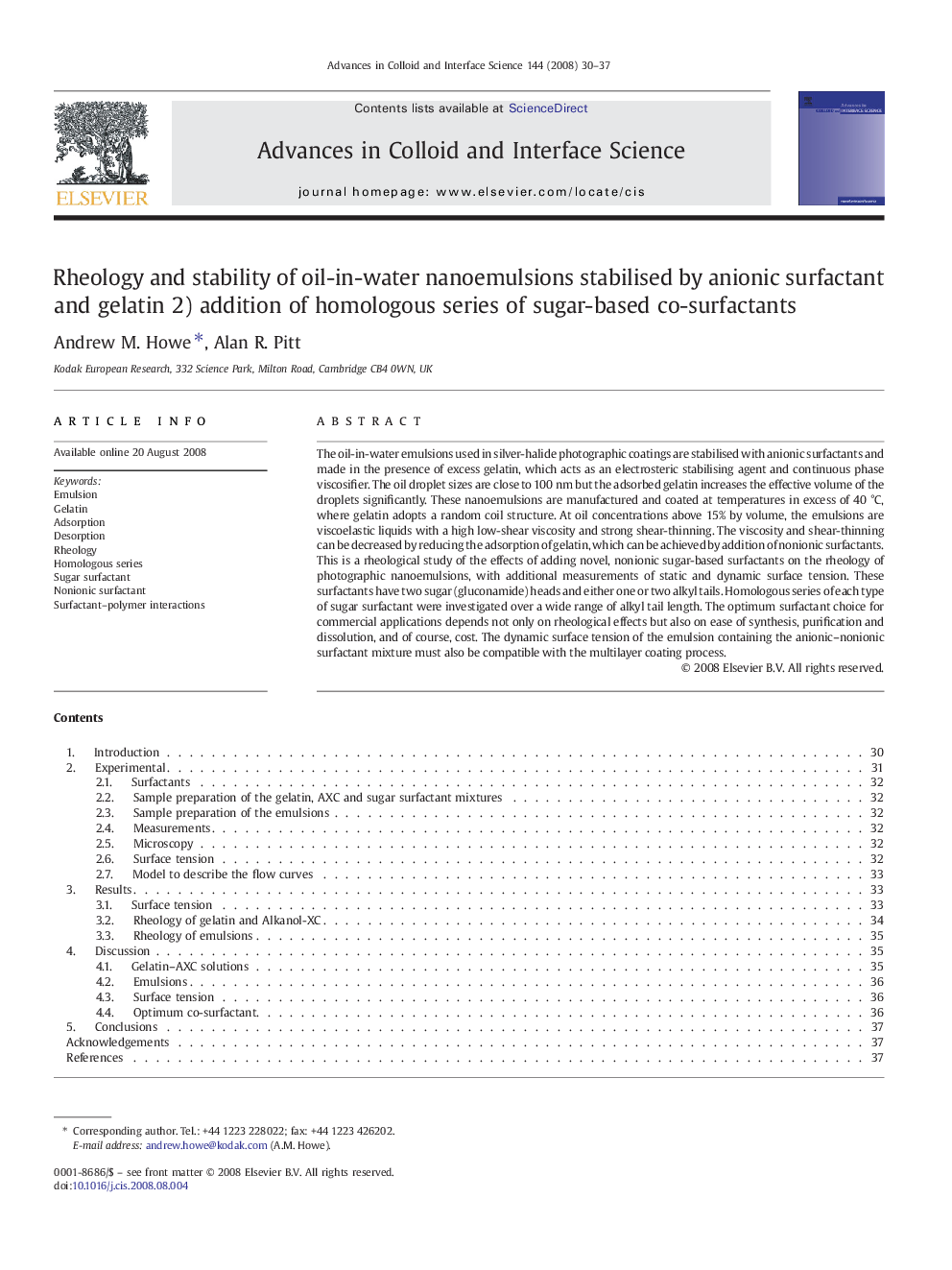| Article ID | Journal | Published Year | Pages | File Type |
|---|---|---|---|---|
| 591166 | Advances in Colloid and Interface Science | 2008 | 8 Pages |
The oil-in-water emulsions used in silver-halide photographic coatings are stabilised with anionic surfactants and made in the presence of excess gelatin, which acts as an electrosteric stabilising agent and continuous phase viscosifier. The oil droplet sizes are close to 100 nm but the adsorbed gelatin increases the effective volume of the droplets significantly. These nanoemulsions are manufactured and coated at temperatures in excess of 40 °C, where gelatin adopts a random coil structure. At oil concentrations above 15% by volume, the emulsions are viscoelastic liquids with a high low-shear viscosity and strong shear-thinning. The viscosity and shear-thinning can be decreased by reducing the adsorption of gelatin, which can be achieved by addition of nonionic surfactants. This is a rheological study of the effects of adding novel, nonionic sugar-based surfactants on the rheology of photographic nanoemulsions, with additional measurements of static and dynamic surface tension. These surfactants have two sugar (gluconamide) heads and either one or two alkyl tails. Homologous series of each type of sugar surfactant were investigated over a wide range of alkyl tail length. The optimum surfactant choice for commercial applications depends not only on rheological effects but also on ease of synthesis, purification and dissolution, and of course, cost. The dynamic surface tension of the emulsion containing the anionic–nonionic surfactant mixture must also be compatible with the multilayer coating process.
